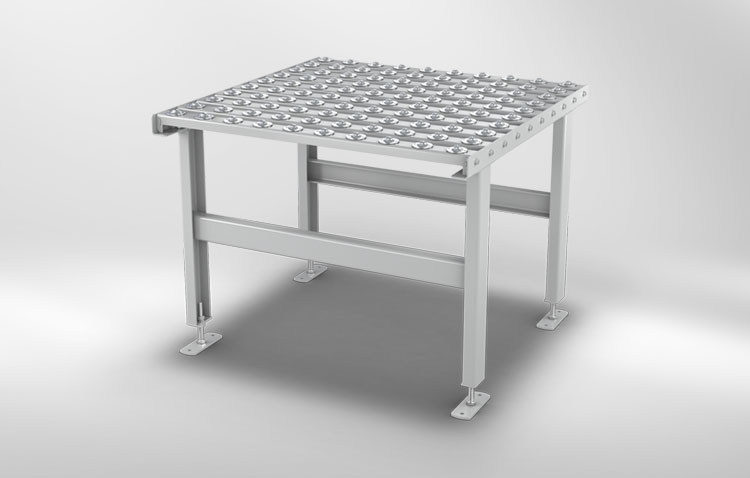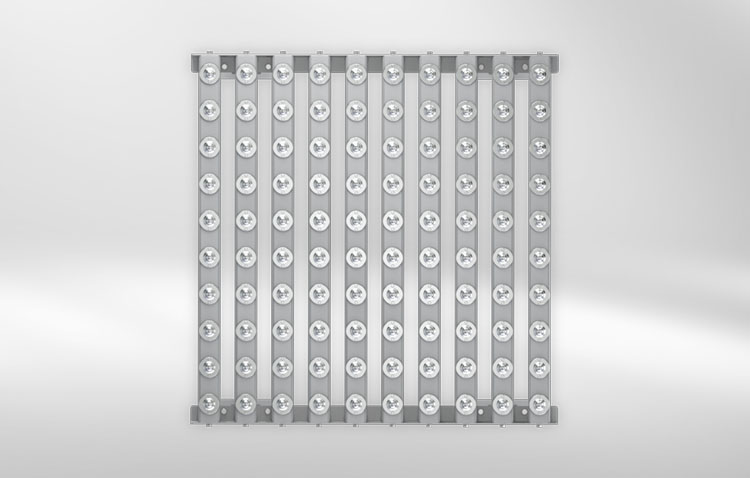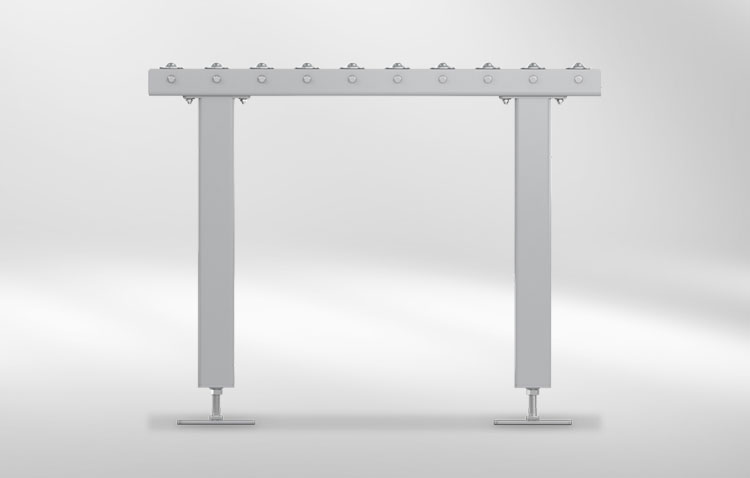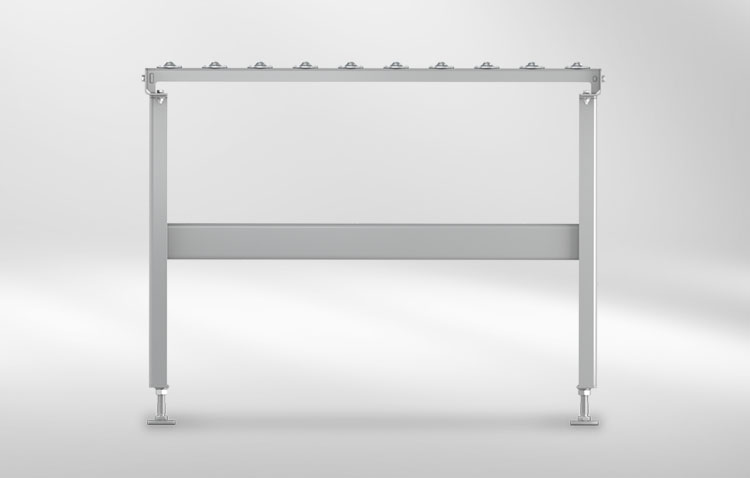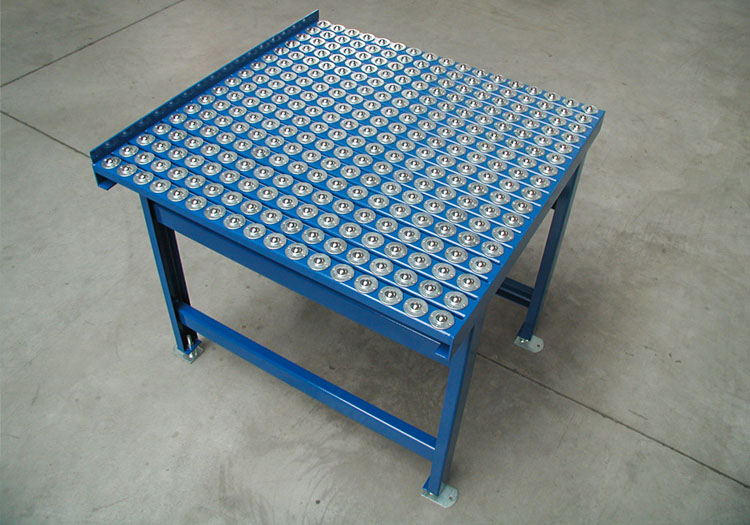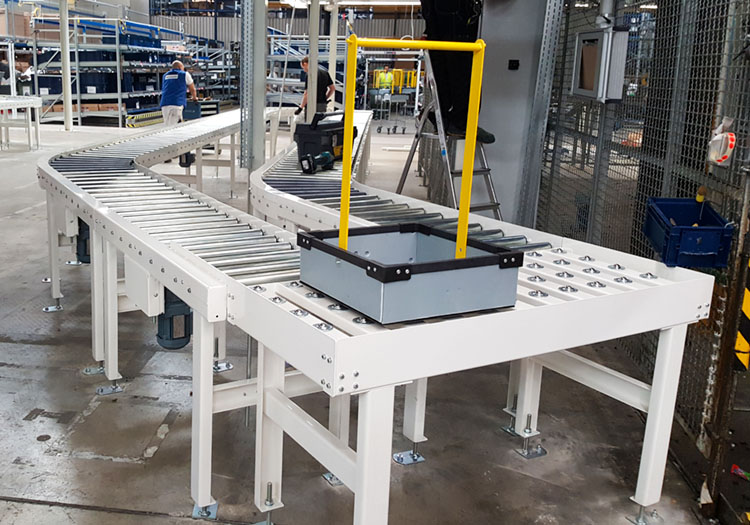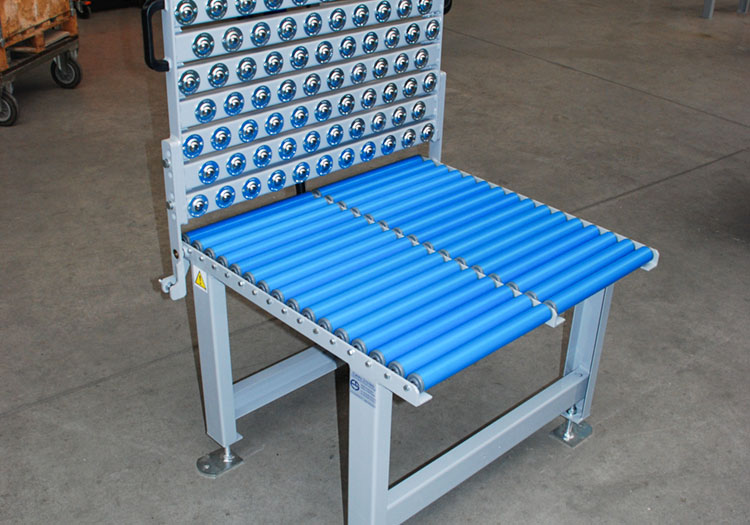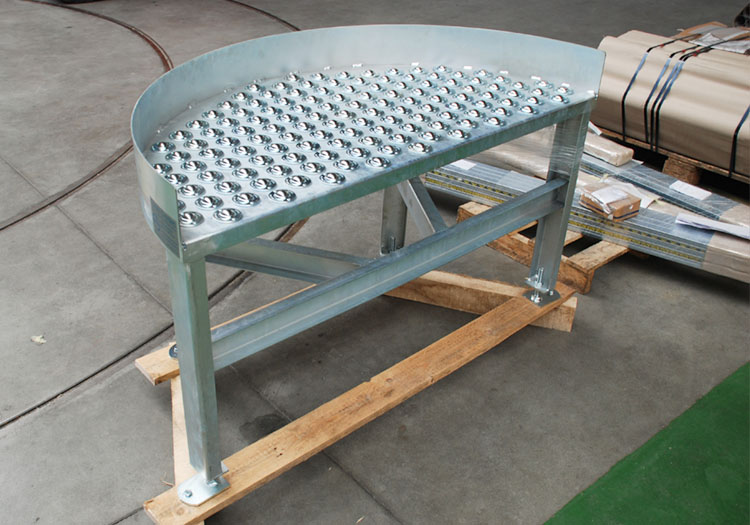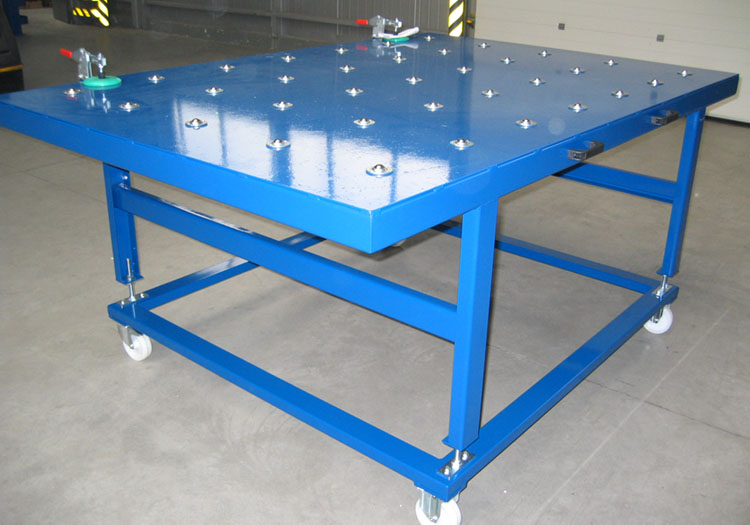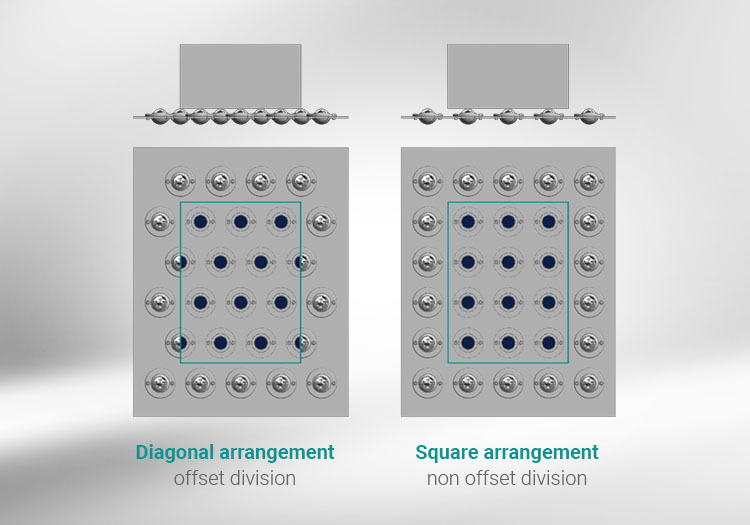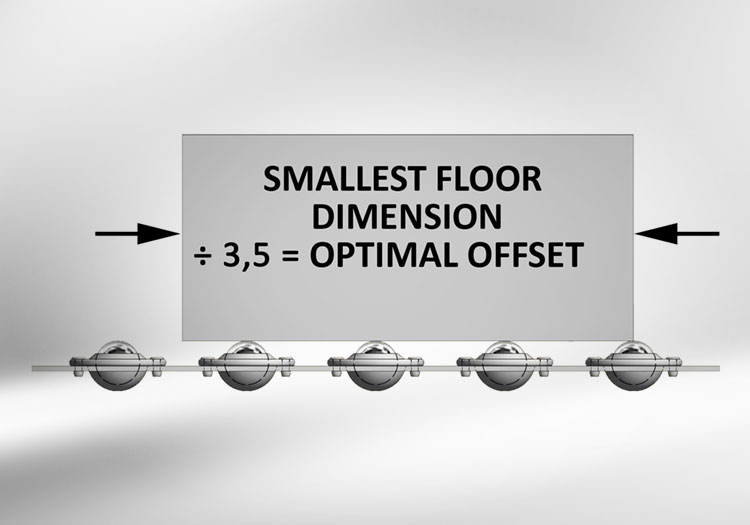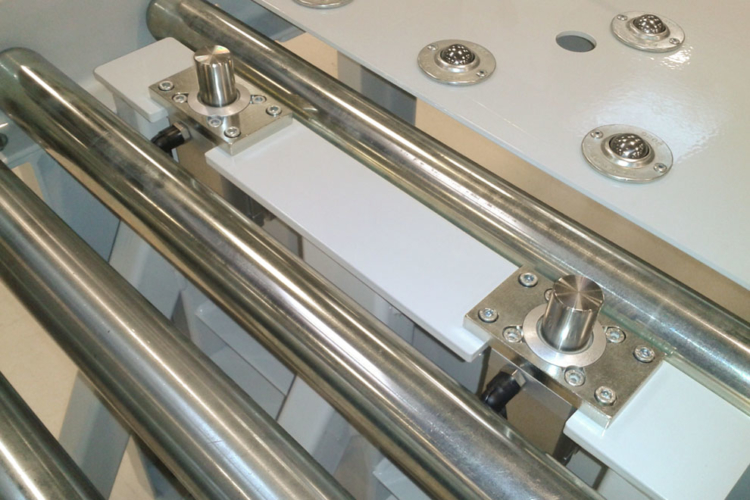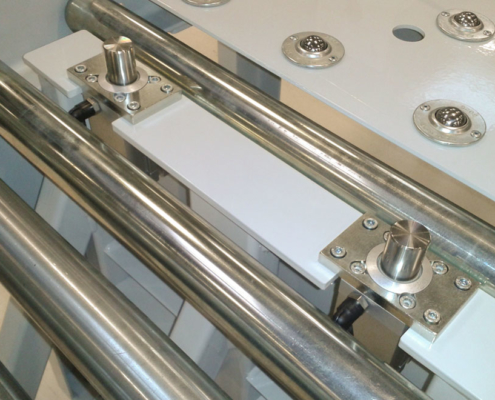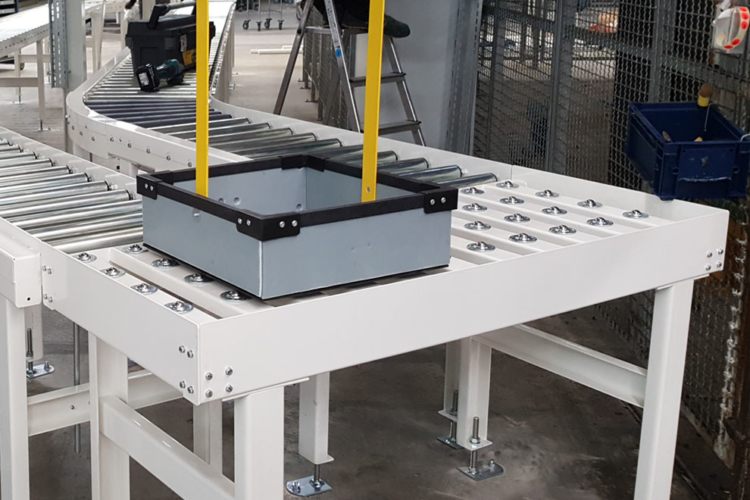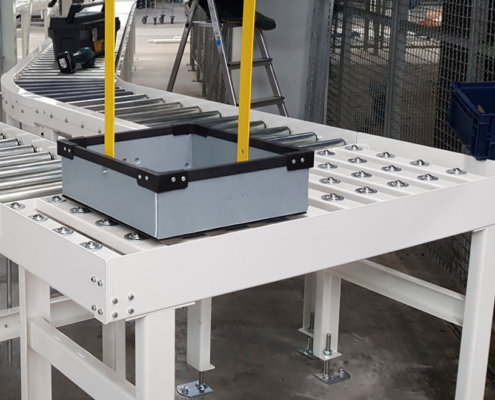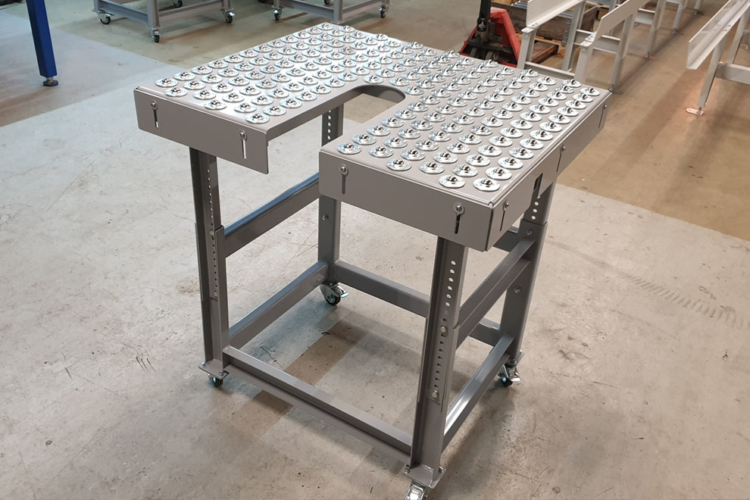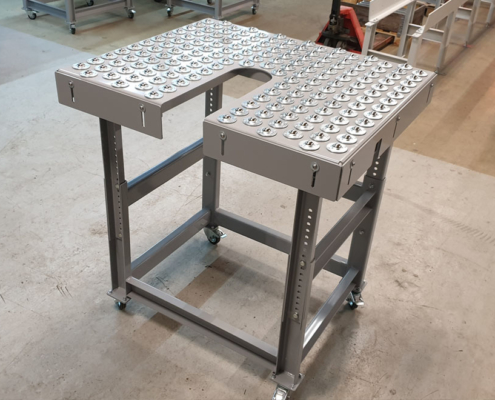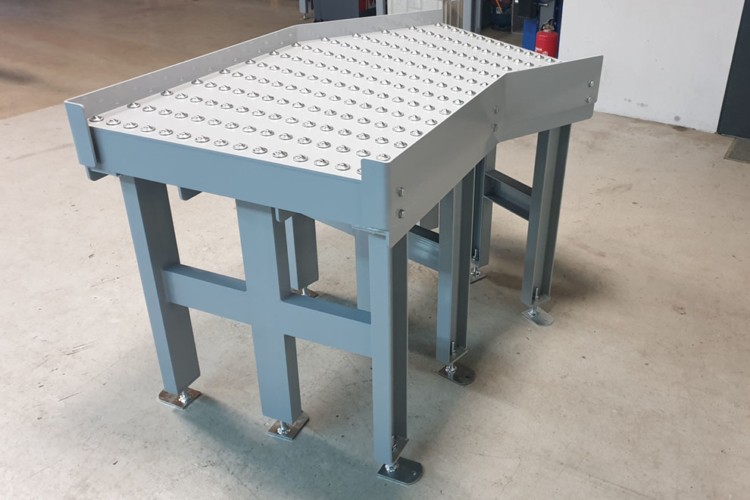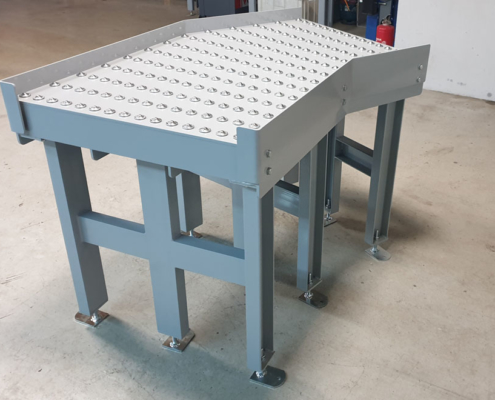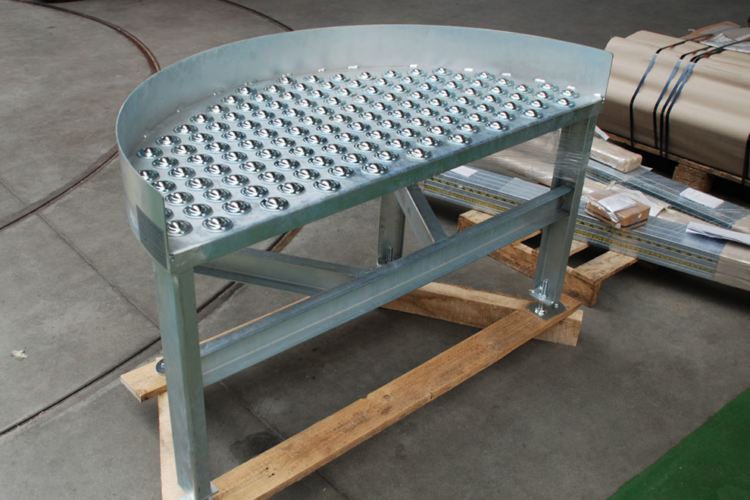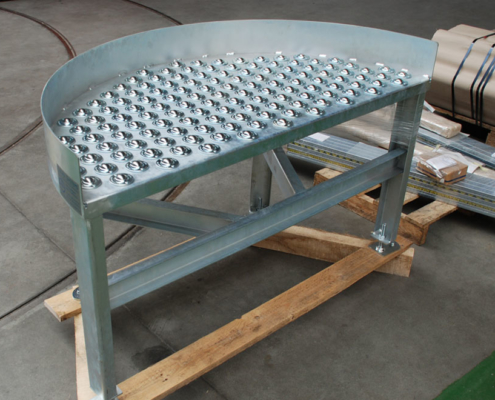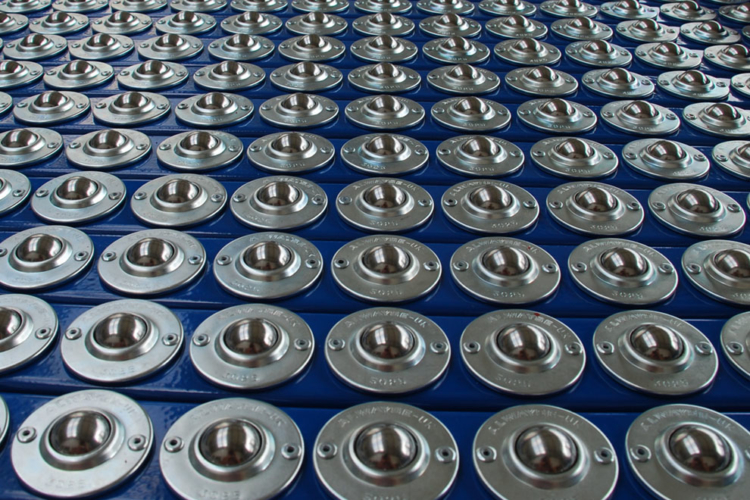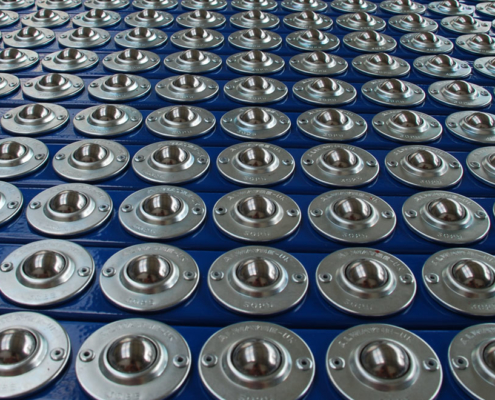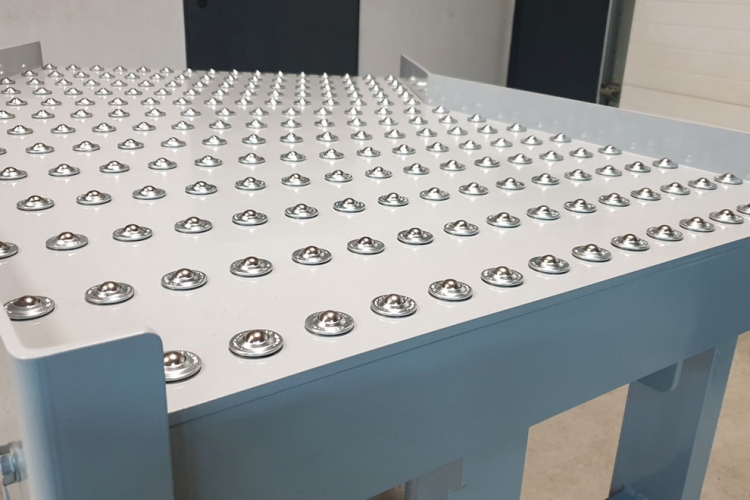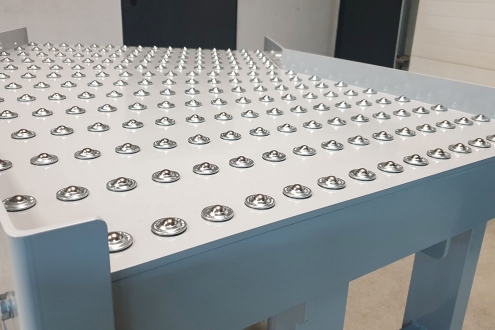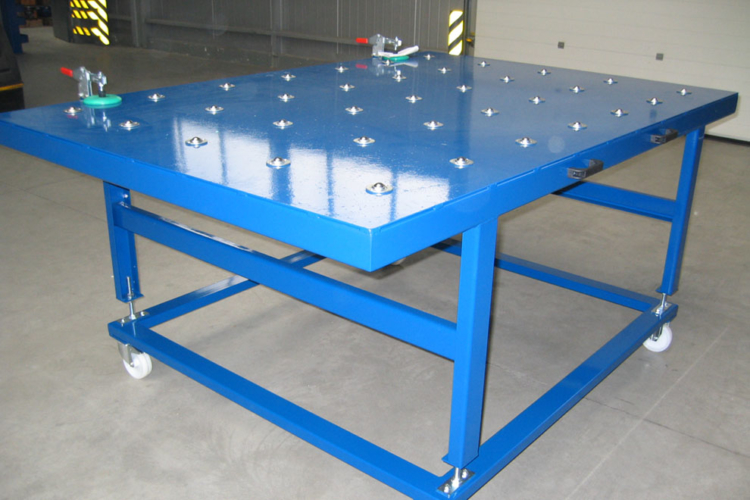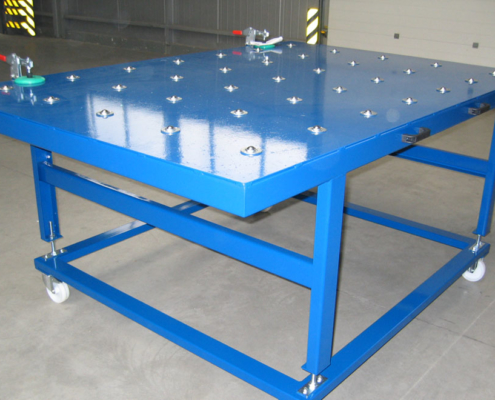Ball transfer table
Picking > Rotate > Change direction
On a ball transfer table, the conveyed material can be moved in all directions – provided it has a smooth, closed and even running surface. Ball transfer units move on all sides and are mostly used for cardboard or plastic boxes during order picking, packaging or manual discharge. Furthermore, even large-area products can be simply turned or pushed by hand.
Suitable for:
- Plastic boxes
- Cardboard boxes
- Tool Changing Device
- And much more…
The advantages at a glance
- Ball transfer units transport in all directions.
- Your goods can change the conveying direction and rotate around their own axis and are ideal for a work table / packing table
- The entire steel construction is lasered, welded or screwed and powder-coated – high quality as with all ALFOTEC products
- Individual design and production exclusively for you and your requirements
- Stops, lateral guides – fixed or adjustable in height and width, or even curved guides for the necessary lateral limitation
- With the help of an additional chassis you can easily move the complete ball roller table and use it in different places
Specifications
The following guide values apply to standard conveyors, in internal ambient conditions and for defined applications and goods conveyed.
| Length (per conveyor) | up to 6.000 mm |
| Useful width | up to 2.000 mm |
| Overall height, without supports | from 45 mm |
| Support | with threaded spindles for height adjustment |
| Standard ball | made of hardened steel, galvanized housing |
| Load per ball roller | up to 55 kg |
| Depending on application, design and load are used: |
|
Basic model/ Basis
As with our roller conveyors, the element consists of two or three basic modules:
- Frame
- Strips equipped with ball rollers
- Optional if required support
Depending on the size of the material to be conveyed, the pitch / distance between the ball transfer units is determined. The entire steel construction is lasered, powder-coated and welded or bolted.
Exemplary application
Typical for the application is the connection of two roller conveyors. Transfer from the feed roller conveyor, delivery and further transport onto the return roller conveyor. Due to narrow and optimally aligned lateral guides as well as stops, the conveyed material can be moved easily and comfortably by hand.
Variants
Ball transfer tables can also be used for special solutions.
Here are some examples:
- as semicircular table with side guide
- with mobile underframe
- as folding passage with supporting gas pressure spring for easy folding up
Additional modules such as stops, adjustable lateral guide(s) and much more complete our offer.
Division of the ball transfer table
We adapt the pitches optimally to your material to be conveyed, depending on length, width and transport direction. For particularly narrow pitches, we use a diagonal arrangement (offset pitch) of the ball transfer units. This results in more support points for the same base dimensions of the goods to be conveyed, so that even smaller goods can be optimally rotated and conveyed.
Calculation of the division
The division – the ball transfer unit distance – can always be determined by calculation. The smallest base dimension of the material to be conveyed – divided by 3.5 – gives the optimum pitch, which ensures stable transport. An example: 700 mm edge length / 3.5 = 200 mm as the smallest division.
